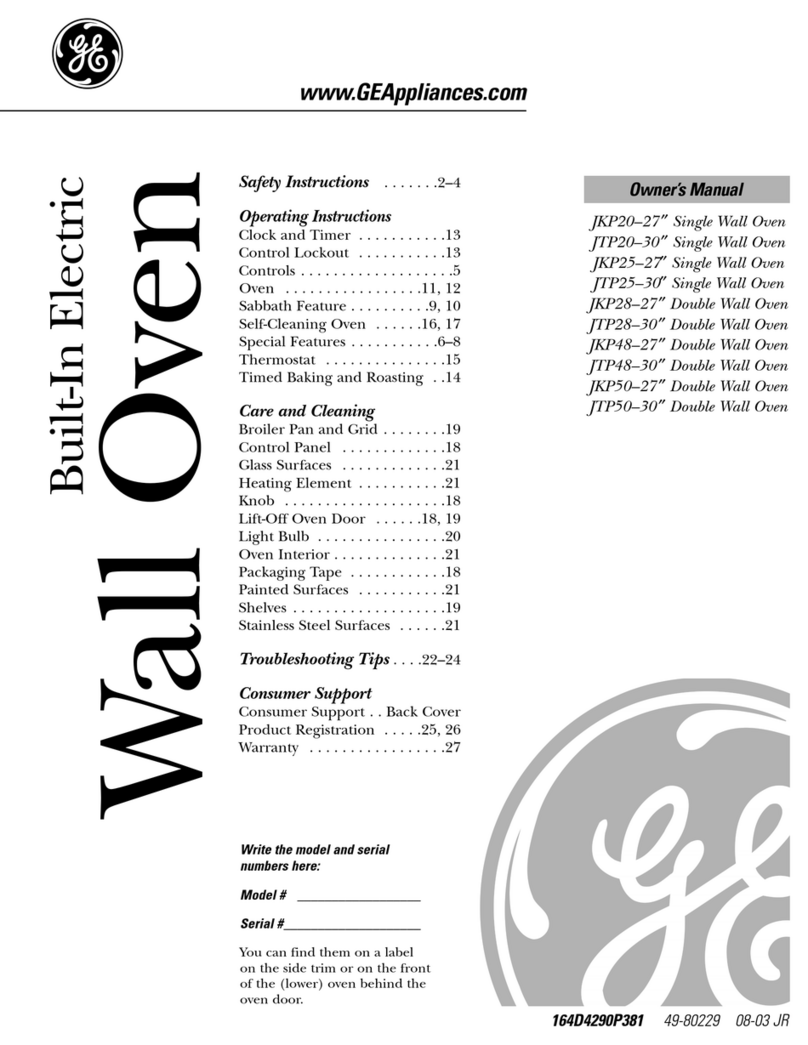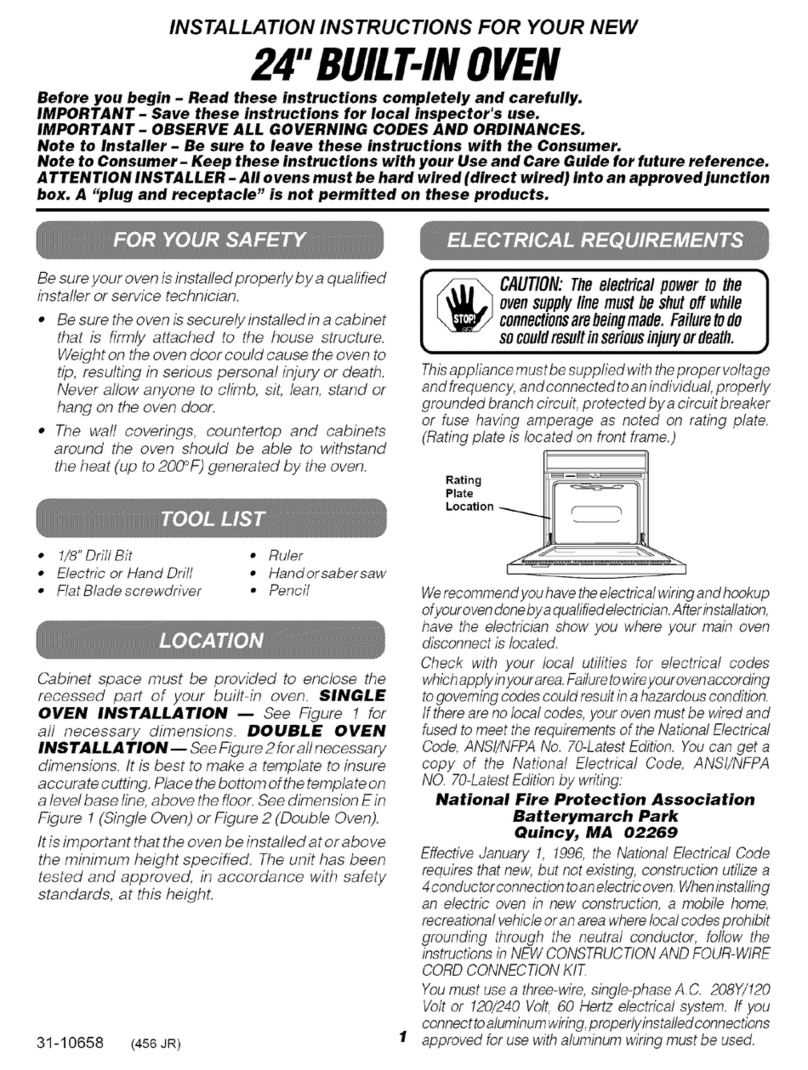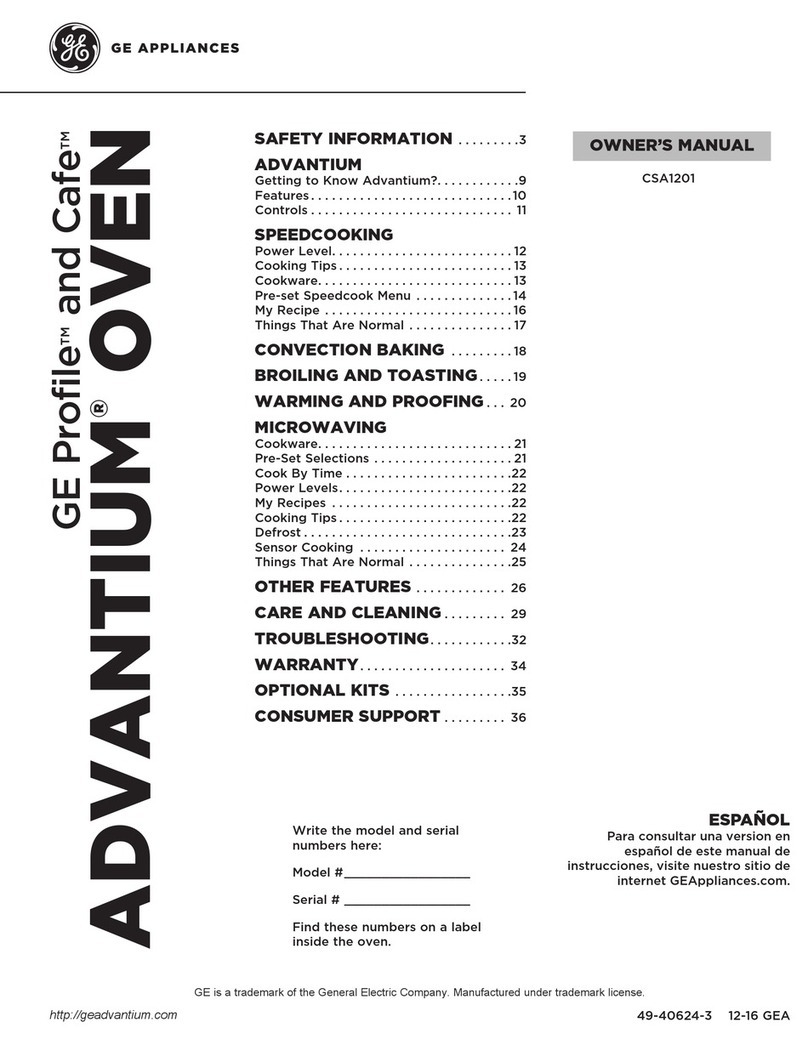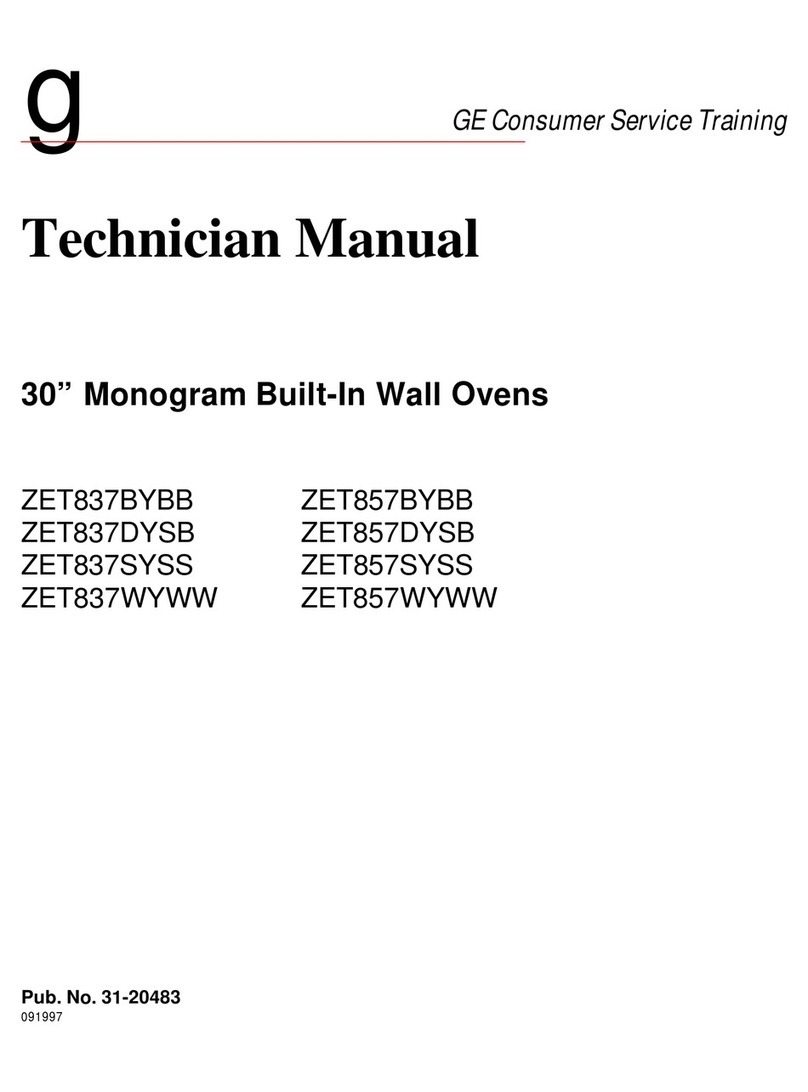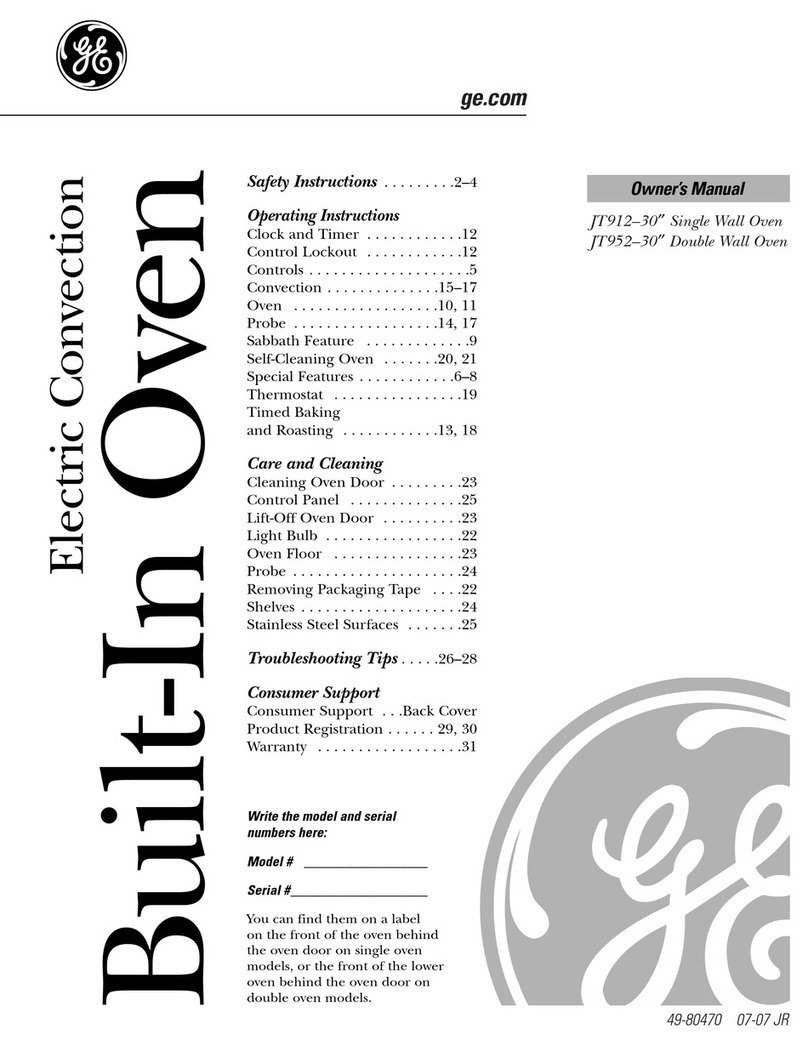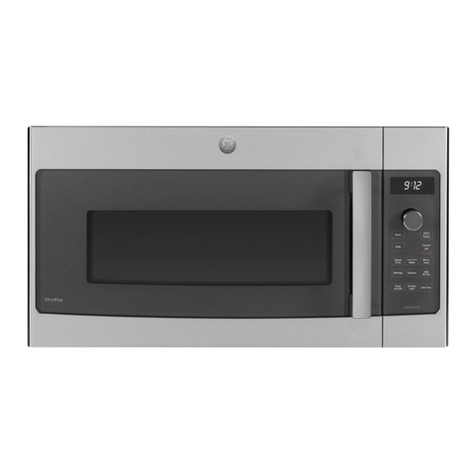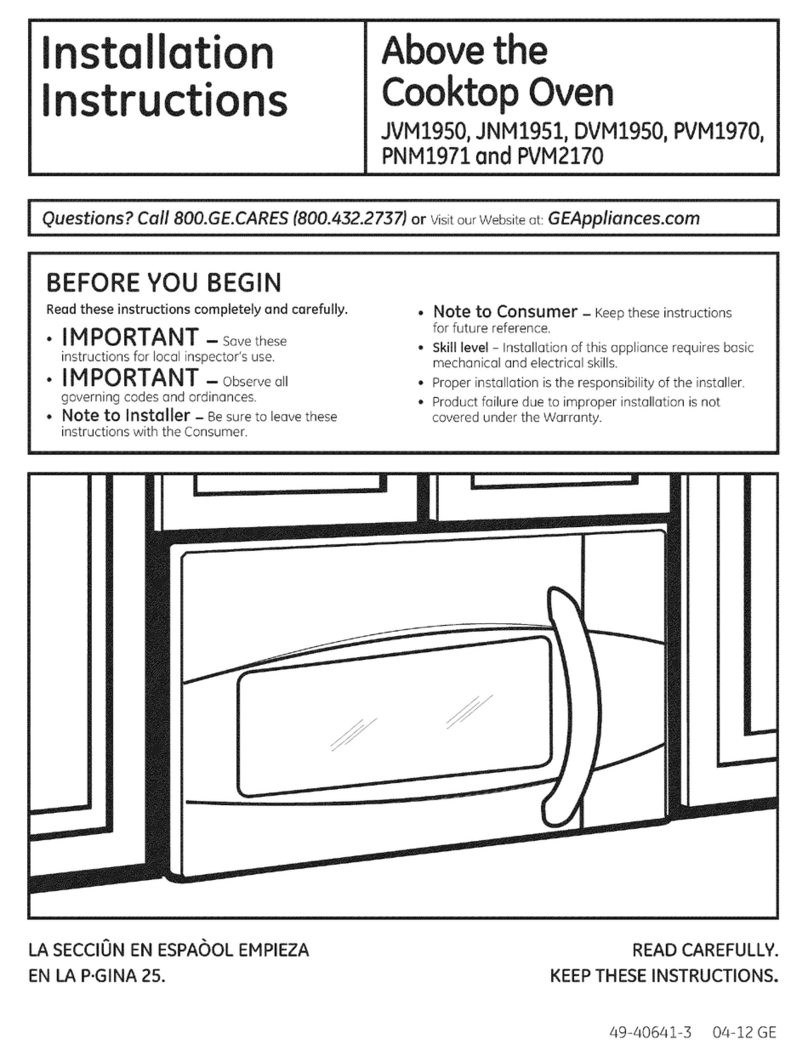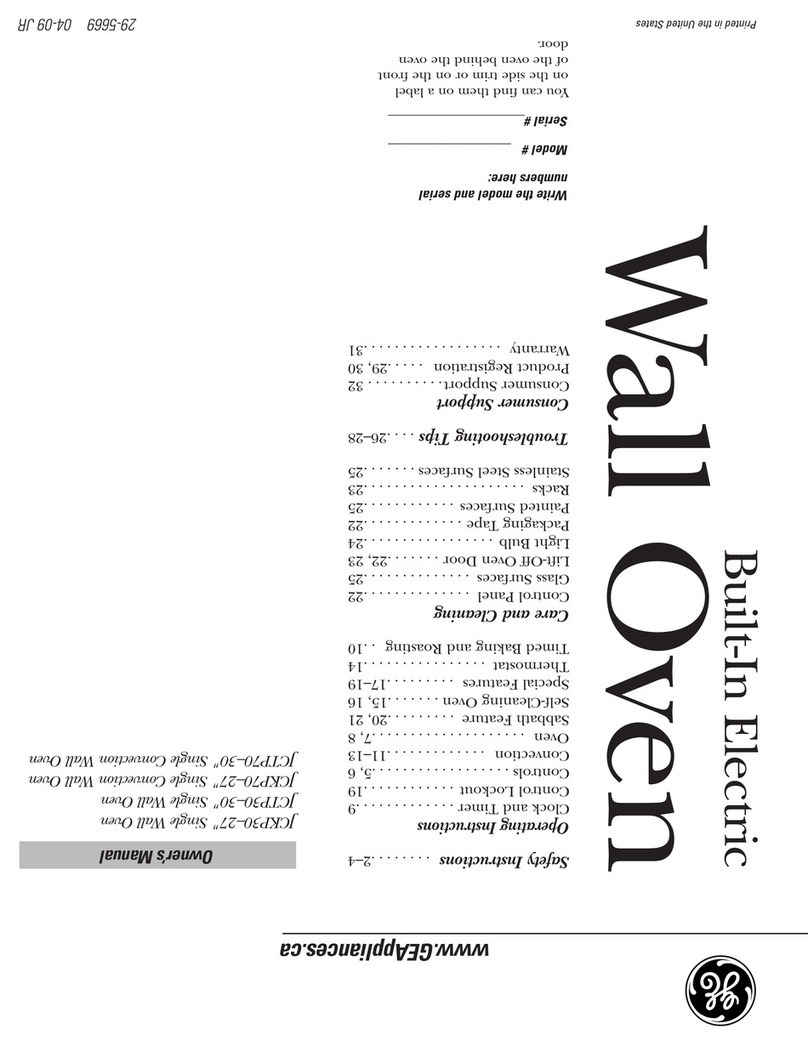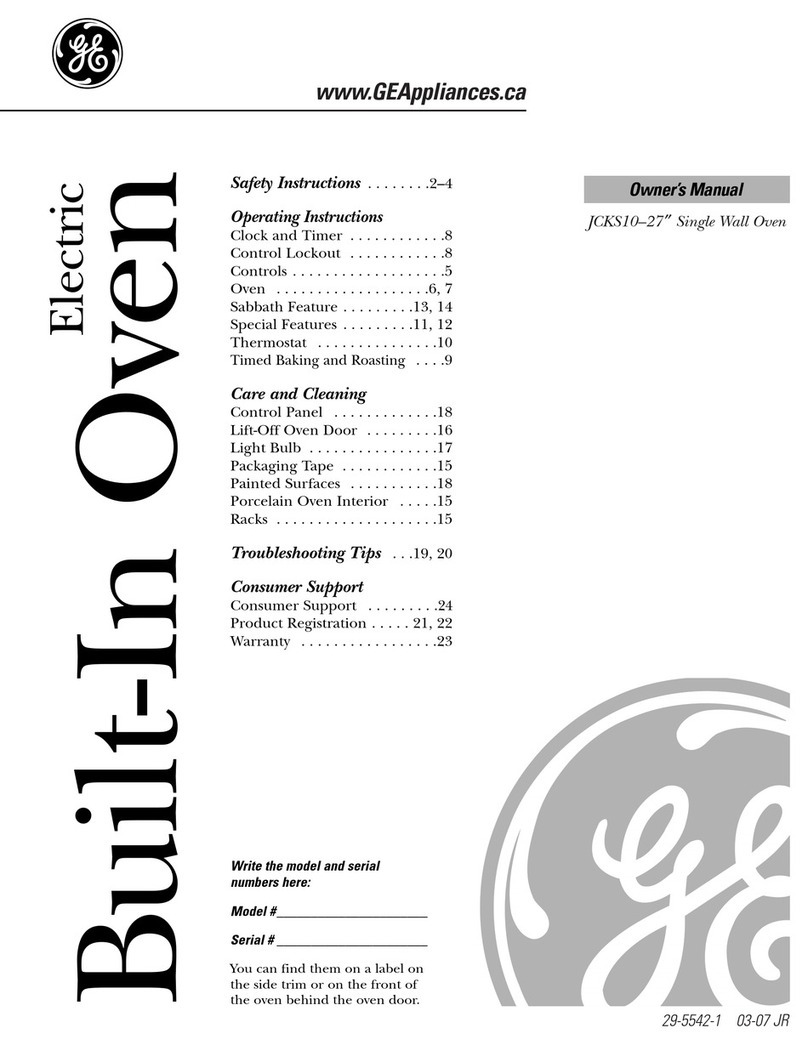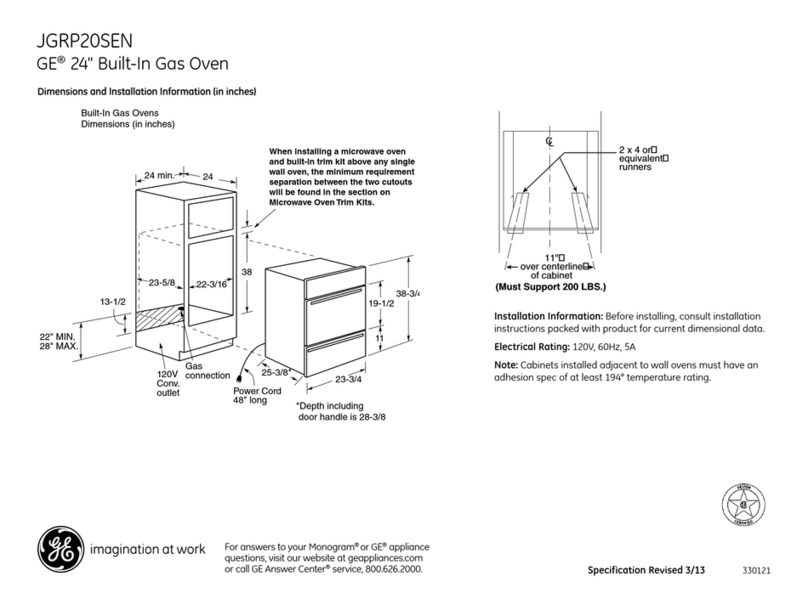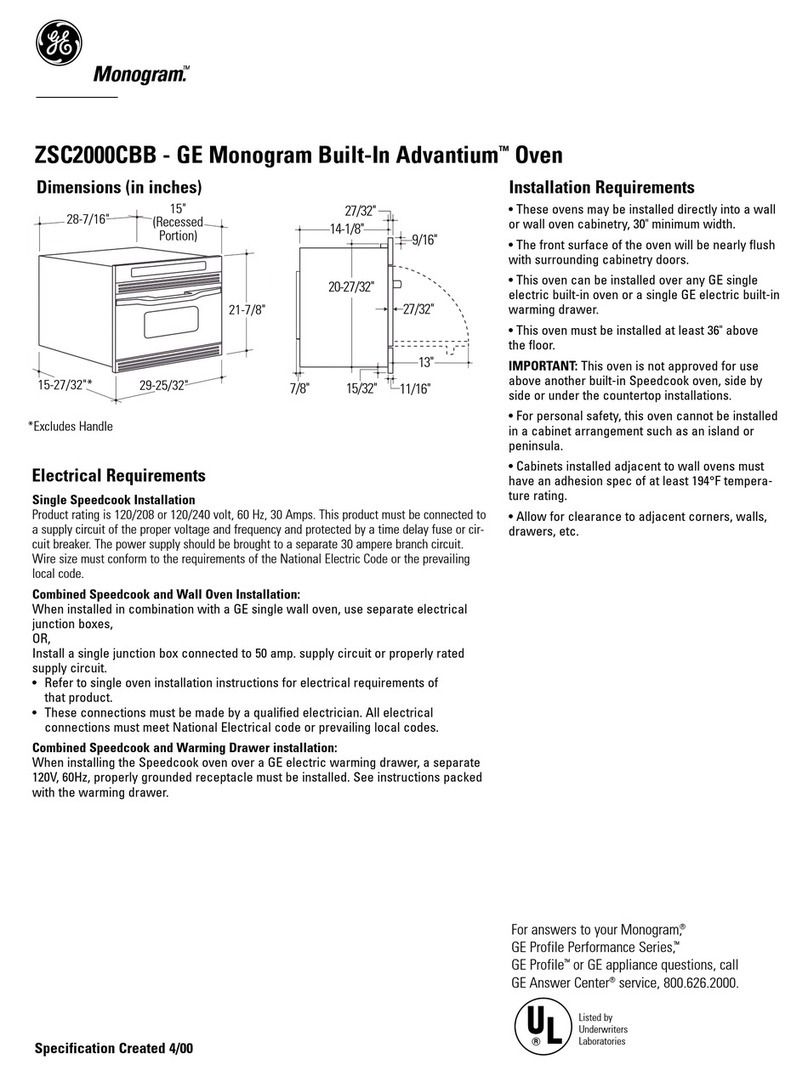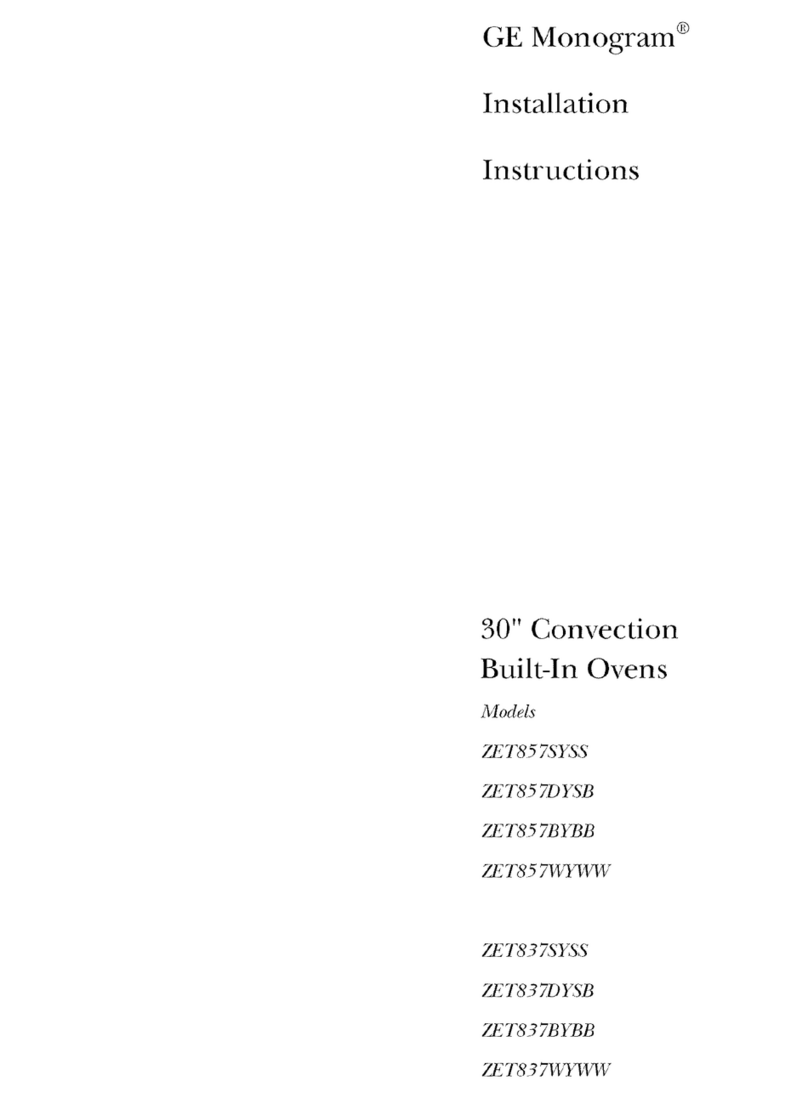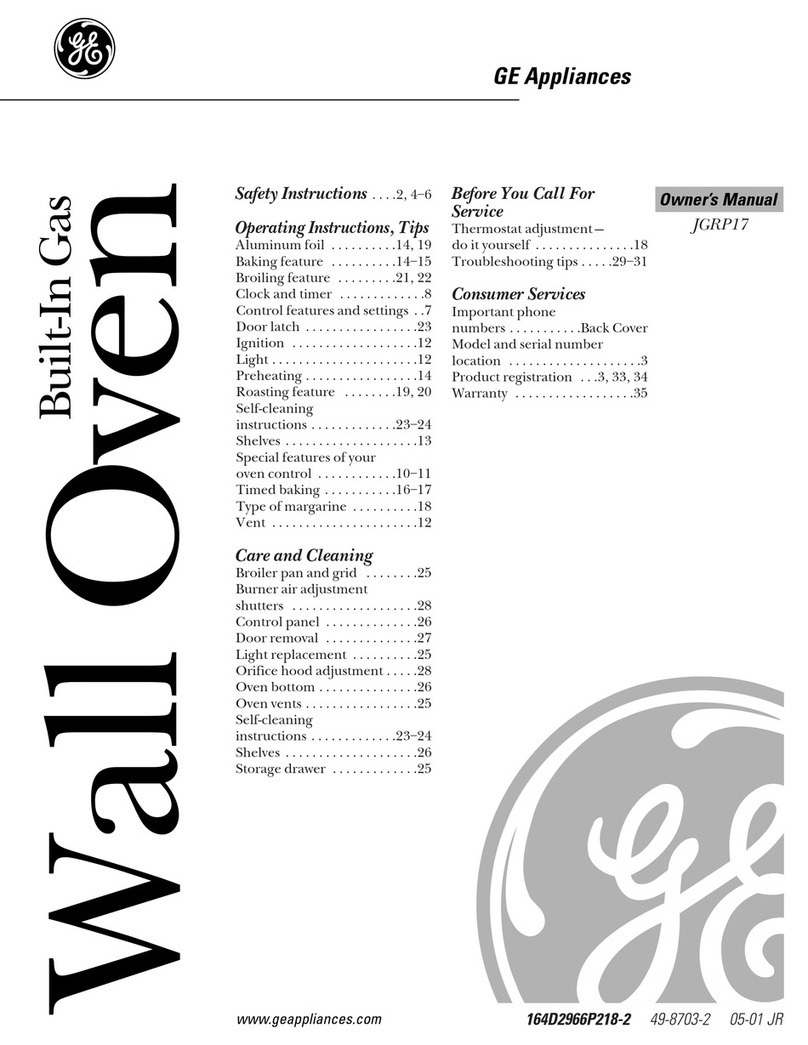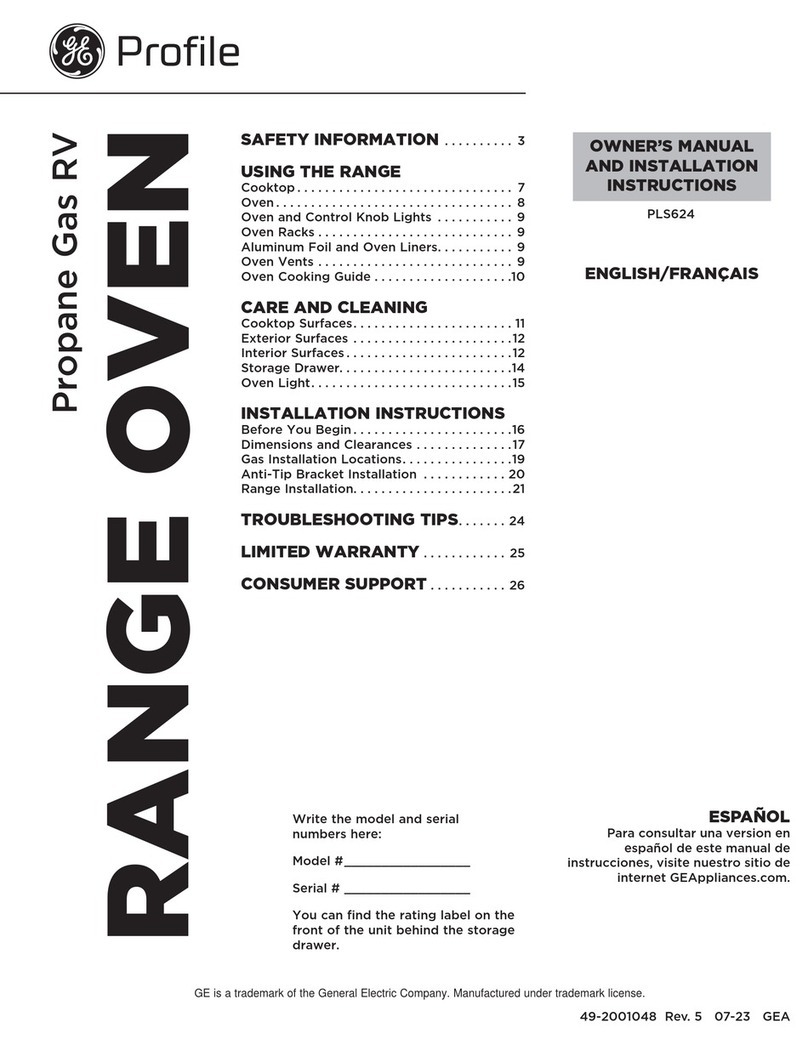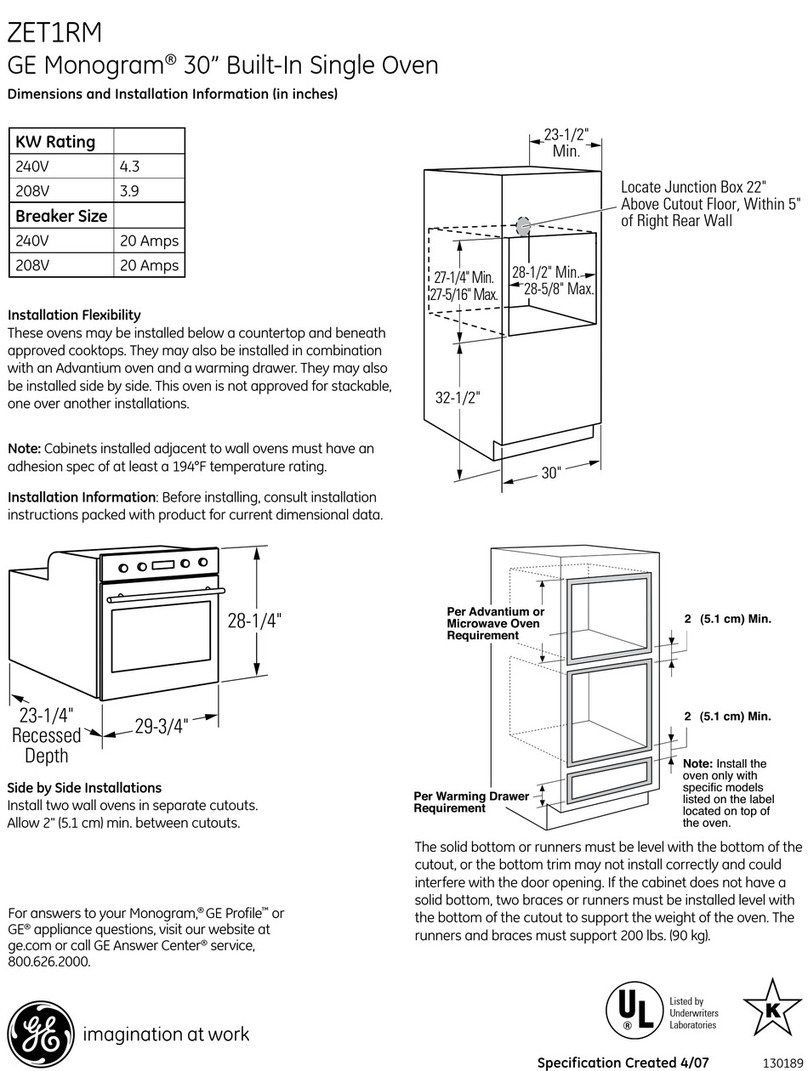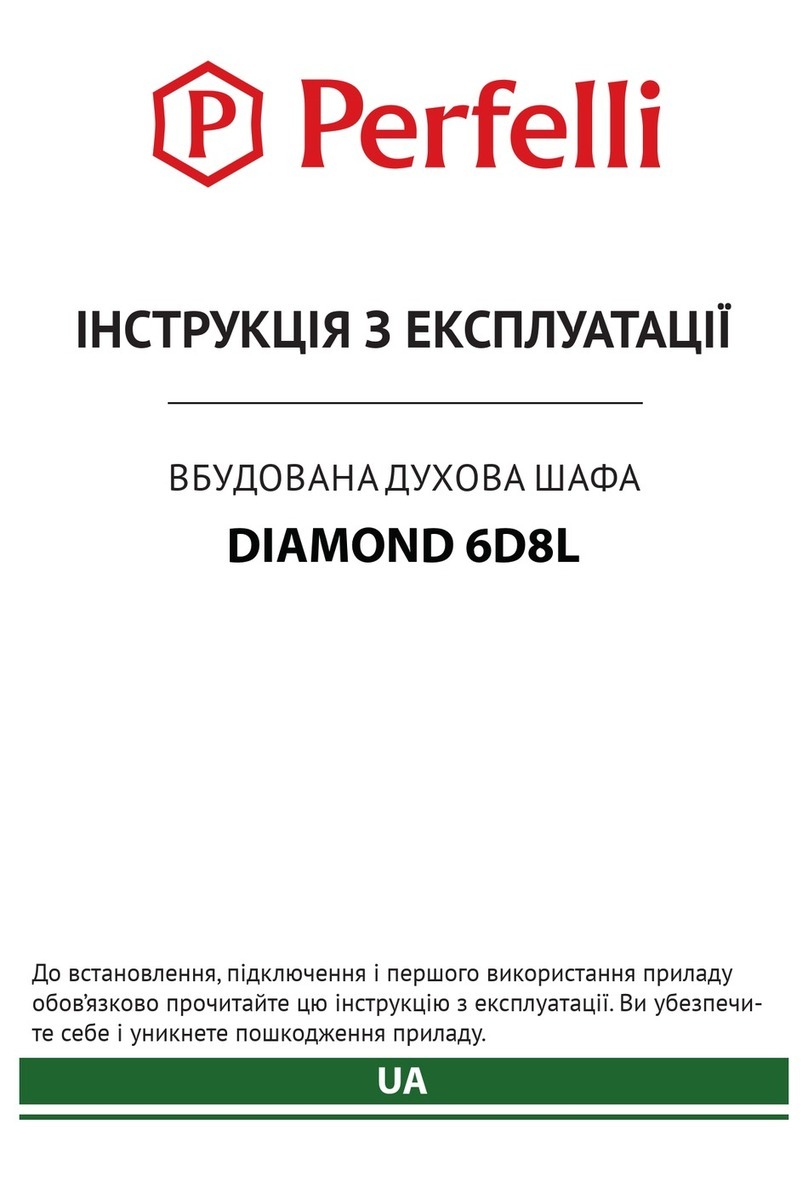-.flPORTANT
SAFETY
NOTICE
●
The
California
Safe
Drinking Water
and
Toxic
Enforcement
Act
requires the Governor of
California
to publish a list of substances known to
the state to
cause birth defects or other reproductive
harm, and requires businesses to warn customers
of potential exposure to such substances.
●
The
fiberglass insulation in self-cleaning
ovens gives off a very
sma~
amount of carbon
monoxide during
the cleaning cycle.
Exposure
can be minimized by venting with an open
window or using a ventilation fan or hood.
When using electrical appliances, basic safety
precautions should be followed, including the
following:
*
Use
this appliance only for its intended use
as described in this guide.
●
Have
the installer show you the location of the
circuit breaker or fuse. Mark it for easy reference.
—*
Be sure your appliance is properly
instifled
and
grounded by a qualified technician in accordance
with
the
provided
hstallation
Instructions.
●
Do not attempt to repair or replace any part of
your oven unless it is specifically recommended
in this guide. All other servicing should be
referred to a qualified technician.
●
Before performing any service, DISCONNECT
THE OVEN POWER SUPPLY AT THE
HOUSEHOLD DISTRIBUTION PANEL BY
REMOVING
THE
FUSE OR
SWITCHNG
OFF
TIIE
CIRCUIT
BREA~R.
●
Do not leave children alone—Children
should
not
be left alone or unattended in an area where
appliance is in use. They
should
never be allowed
to sit or stand on any part of the appliance.
~
Do not allow
anyone
to climb, stand or hang on
the door. They could damage the oven or cause
severe personal injury.
●
C.4UTION:
ITEMS OF INTEREST TO
CHILDREN
SHOULD
NOT BE
STORED
IN
CABINETS ABOVE AN OVEN. CHILDREN
- CLIMBING ON THE OVEN TO REACH
ITEMS COULD BE SERIOUSLY
~JURED.
●
Do
not store flammable materials in an oven.
● Teach children not to play with the controis
or
any other part of the oven.
●
Never
leave
the oven
door
open
when you are
not
watching
the
oven.
●
Always keep combustible
wtil
covering, curtains
or drapes a safe distance from your oven.
. Never wear loose-fitting or hanging garments
while using the
app~ance.
Be
careful when
reaching for items stored in cabinets over the
oven. Flammable material could be ignited if
brought in contact with
hot
heating elements and
may cause
severe
burns.
●
DO NOT STORE OR USE COMBUST~LE
MATERIALS, GASOLINE OR OTHER
FLAMMABLE VAPORS
AND
LIQUIDS IN
THE
VIC~ITY
OF THIS OR ANY
OTHER
APPLIANCE.
●
Use only dry pot
holdereMoist
or damp pot holders on hot surfaces
may
result
in burns from steam. Do
not
let
pot holders touch hot heating elements.
Do not use a towel or other bulky cloth. Such
cloths can catch fire on a hot heating element.
●
Always keep dish towels, dish cloths, pot
holders and other linens a safe distance from
your oven.
●
Always
keep
wooden and
plastic
utensils
and
canned
food a safe distance away from
your
ove~.
●
For your safety, never use your appliance for
warming or heating the room.
●
Do
not
let cooking grease or other
flammable materials accumulate in
or near the
oven.
Q
Be
sure
the oven is securely installed in a
cabinet that is firmly attached to the house
structure. Never
allow
anyone to climb, sit,
stand or hang on the oven door.
●
Do
not
use water on grease fires.
Smother fire or
flame
or use a multi-
purpose dry chemical or foam-type
fire extinguisher.
Flame in the oven
can
be smothered completely
by closing the oven door and turning the oven off
or by using a multi-purpose dry chemical or
foam-
type fire extinguisher.
(ci)ndnued
next[)age)
3

